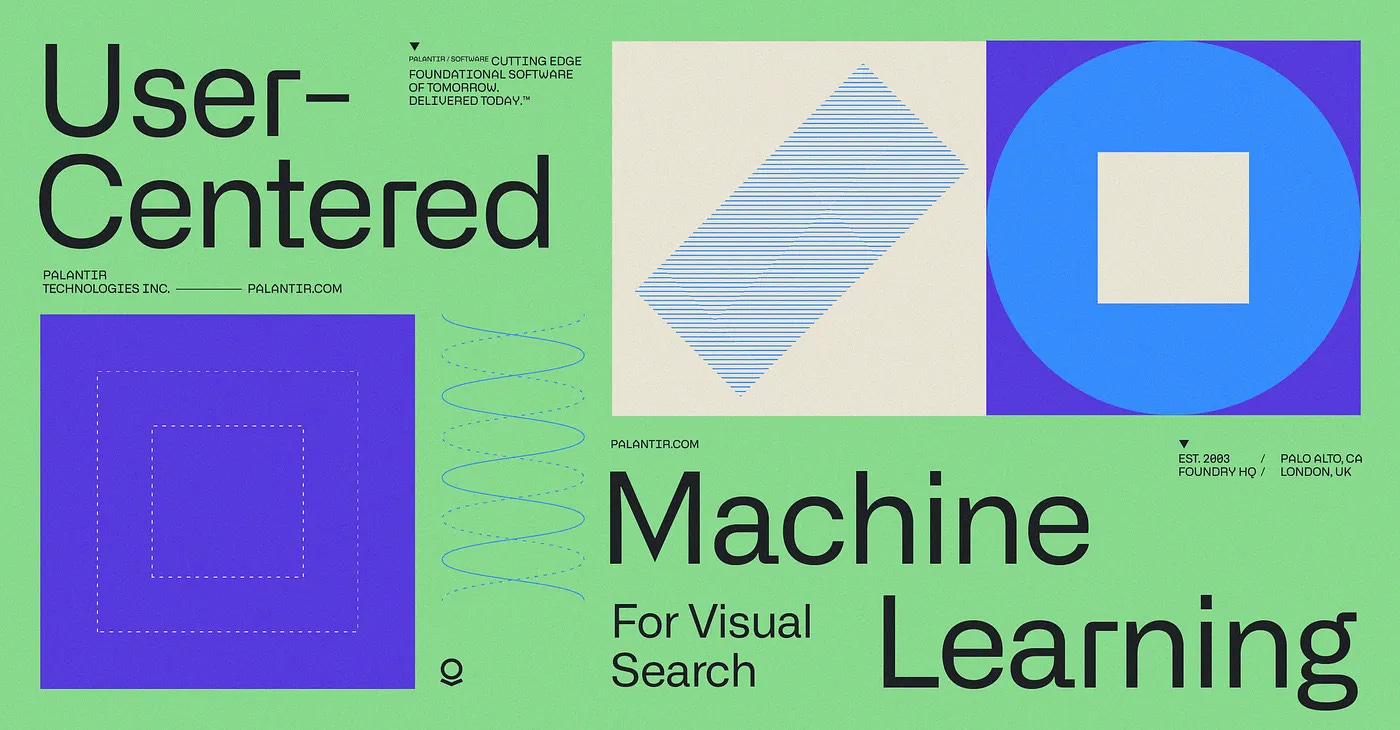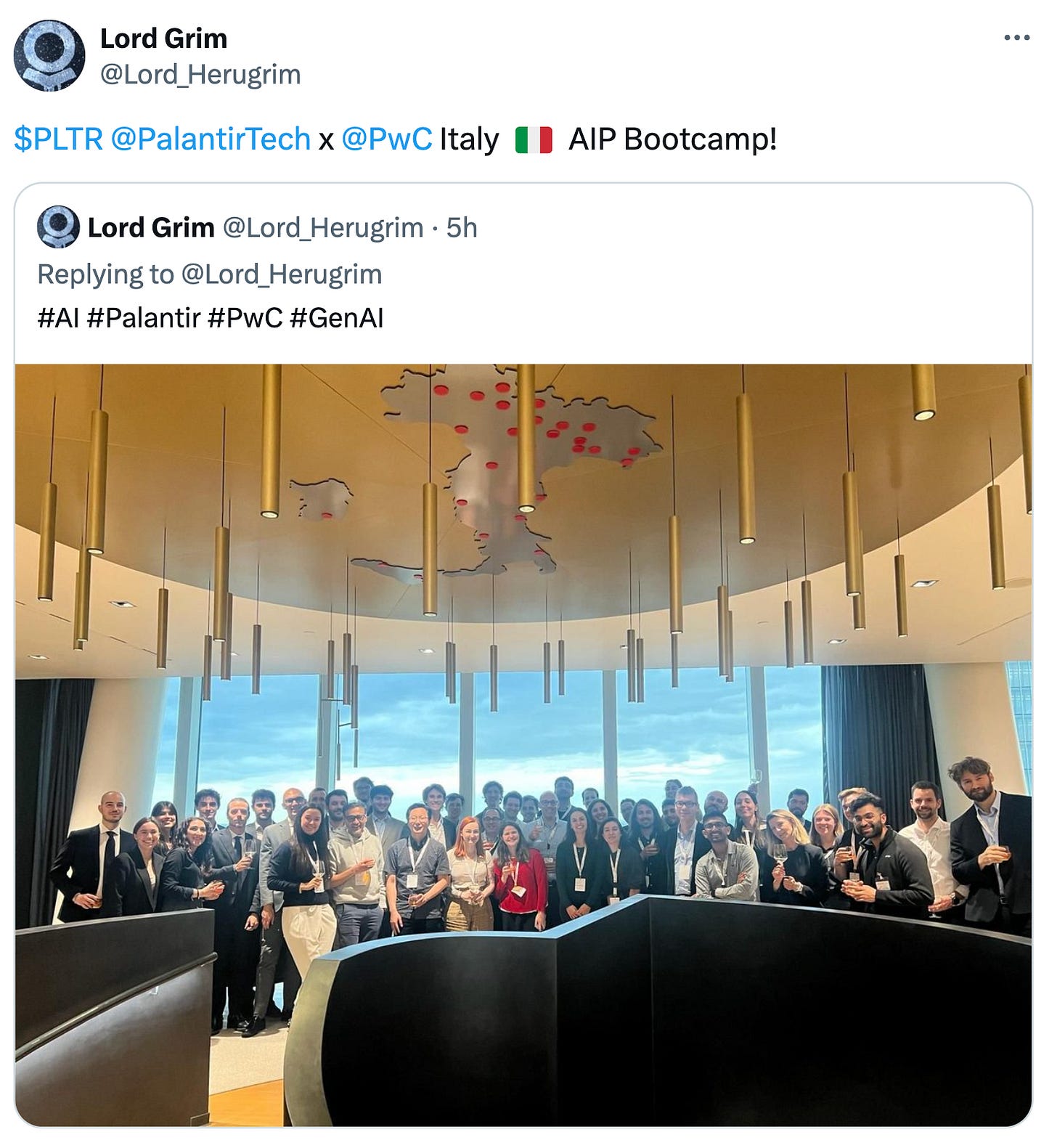Palantir Unveils User-Centered Machine Learning for Visual Search
this newsletter will be a nerdy one
Welcome back to DailyPalantir! Today’s newsletter is going to be very nerdy — less about the company, more about the tech. I’m going to try to condense it down so that everyone can understand, but we’re going to deep dive into the latest blog Palantir put out and what it means for investors as we try to assess the business opportunity. We’ll also get some help from…a Palantir employee. Let’s dive in!
New Palantir Article
So, Palantir put out an article this week that was really interesting as I read it. We know Palantir has one of the deepest tech moats in SaaS, and what they unveiled today further goes to show how they think of streamlining processes by building applications on top of data pipelines to make a dramatic impact for decision makers in a business.
User-Centered Machine Learning for Visual Search
In a nutshell, what UCML is:
To accomplish this, our team has been hard at work augmenting UCML with Visual Search to give users the ability to initiate and self-serve their own bespoke detection needs on-demand. With Visual Search, we enable users to detect any object, in any image, in real time, without the need for an underlying object detection model for an object class.
So, what does this mean in the context of how Palantir will allow users to engage wit this?
The way I believe people can think of UCML is that it is a paradigm that focuses on integrating the end-user feedback directly into the machine learning workflow, particularly in the field of Computer Vision (CV). This approach is designed to address the challenges faced by users when pre-existing CV models do not meet their specific needs or fail to adapt to dynamic mission requirements. By emphasizing user interaction with machine learning models, UCML allows for rapid iteration and improvement based on real-world use.
The concept behind UCML at Palantir is to transform static, inflexible computer vision models into adaptable tools that can learn from user input. This means that instead of waiting for long development cycles to update a model, users can provide immediate feedback which can be used to refine and enhance the model's performance. The goal is not only to improve accuracy but also to make these systems more intuitive and responsive to the actual tasks they are employed for. It should make a business more efficient and allow you to update training cycles at a must faster rate than having to wait for models to be updated.
In practical terms, this involves deploying advanced detection models that can be quickly customized by analysts working with imagery data—such as satellite images—to better detect and track objects of interest. For instance, military analysts could use UCML-enhanced CV technology from Palantir to identify various types of vehicles or vessels in aerial imagery more effectively than with traditional CV approaches.
Government Application
So, if this is so powerful, how would it work in the government space?
Surveillance:
A government entity could use Palantir's User-Centered Machine Learning (UCML) to enhance its intelligence and surveillance capabilities. For example, consider a scenario where a defense department is tasked with monitoring cross-border activities to maintain national security. Traditional satellite imagery analysis requires extensive manual effort and can be time-consuming, which may result in delayed responses to critical situations.
With UCML, analysts working for the government can directly interact with the output of computer vision models applied to satellite imagery. If the initial model fails to detect certain vehicles or objects that are relevant for security purposes, analysts can manually annotate these missed detections. Upon receiving this feedback, UCML processes the input in real-time and updates its detection algorithms accordingly.
Disaster Response:
Another way a government entity could utilize Palantir's User-Centered Machine Learning (UCML) is in disaster response and management. When natural disasters strike, such as hurricanes or wildfires, rapid assessment of the situation is critical for an effective response. Traditional methods of damage assessment are often slow and can delay aid to the affected areas.
With UCML, emergency management agencies can quickly analyze aerial or satellite imagery before and after a disaster to identify damaged infrastructure, such as roads, bridges, and buildings. Analysts can provide feedback on the model's performance by marking areas that have been incorrectly assessed or overlooked by the initial algorithm. The machine learning model then learns from this input to improve its accuracy in real-time.
The government use cases of UCML make a ton of sense and likely can scale across countries internationally for their militaries to take advantage of the product.
However…what could the commercial application of it be?
Business Use Cases
I didn’t really know the answer to that — so I asked Chad, one of the engineers who works at Palantir and publicly engages with the community. Here’s what he said:
When I read this, UCML started to make more sense to me. If you needed to train a model on a set of images, instead of manually feeding the model with new objects/pictures/etc, UCML is able to use visual search to automatically train for objects you want to be included in the model by detecting that object within the source data. It’s one way Palantir is showing how businesses can streamline their operations and continue to save time and money.
So, I started thinking of a few commercial applications of this tech once Chad said this…
Retail:
UCML be highly beneficial for retail companies managing extensive inventory across multiple locations. Consider a large retail chain that needs to monitor stock levels in real-time to optimize supply chain operations and prevent overstocking or stockouts.
Using UCML, the company could deploy computer vision models to analyze visual data from store shelves captured through cameras or drones. Store employees or managers could interact with the model's output by indicating which products are incorrectly identified, undercounted, or missed entirely. The feedback would then be used by UCML to refine its detection algorithms on-the-fly.
Healthcare:
UCML could be applied in the healthcare industry, particularly for medical imaging analysis. Hospitals and healthcare providers deal with a vast amount of complex imaging data that require precise interpretation, such as X-rays, MRIs, and CT scans.
With UCML, radiologists and other medical professionals can provide immediate feedback on the outputs of machine learning models that are used to detect anomalies or diagnose conditions from these images. For instance, if a model overlooks a subtle sign of a disease or misclassifies an image, the clinician can correct it. The UCML system then learns from this correction to improve its diagnostic algorithms.
The TAM of something like UCML, which is one layer in Foundry on top of many different applications, seems to be massive if Palantir can show the use cases of a feature like this to the various clients they have.
Italy Bootcamp
Last thing for today — I mentioned yesterday Palantir doing a bootcamp in Italy with PWC, here’s an image for that:
It’s really cool to see these bootcamps scaling.
That’s it for today - see you tomorrow!
This newsletter will always be free and never have paywalled content. To support the newsletter, you can give a gift subscription below. Thank you for reading daily!




